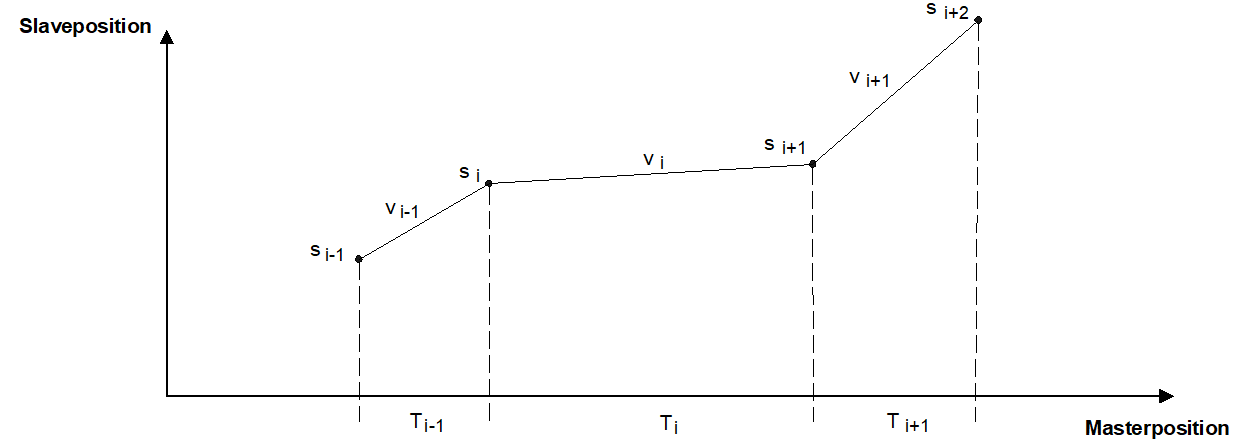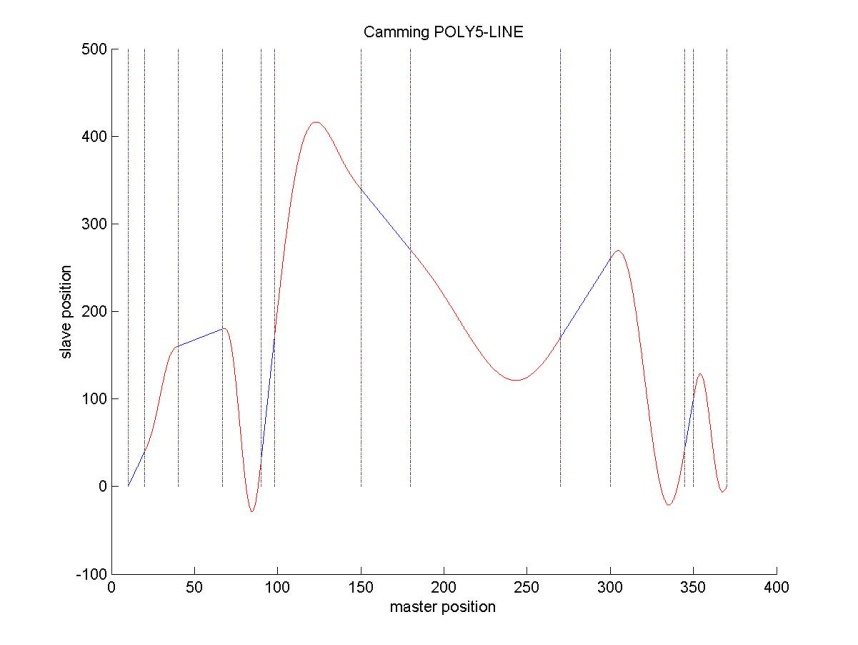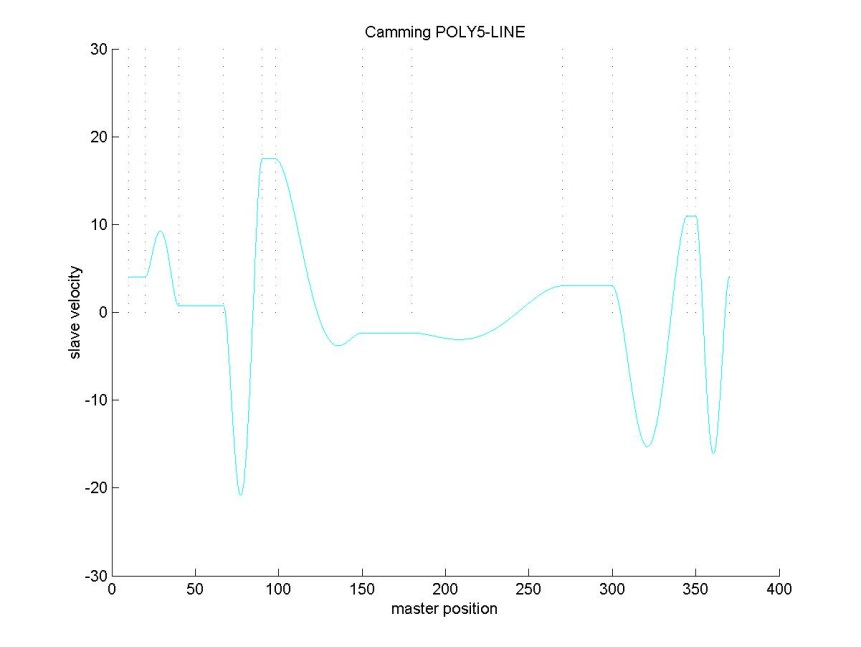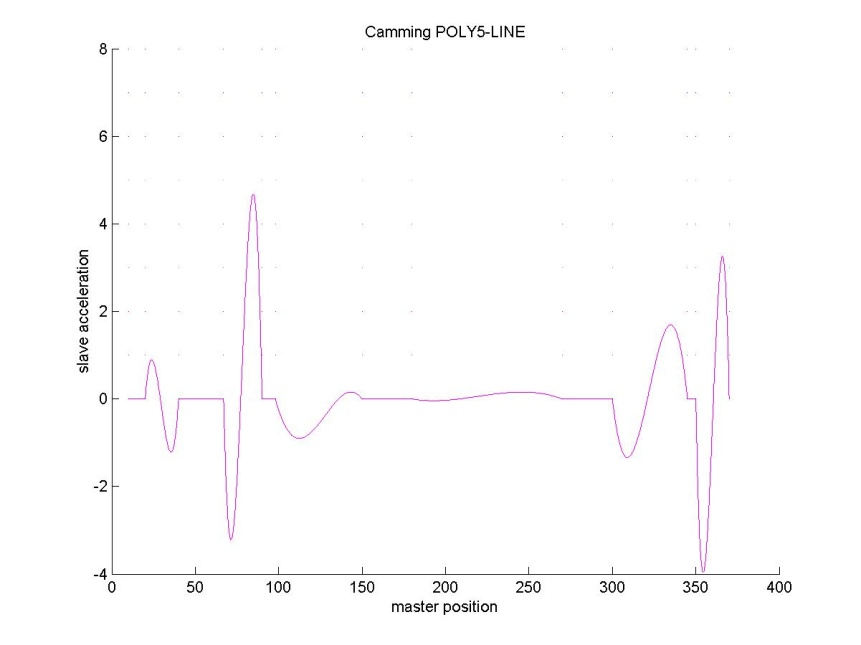Calculating the polynomial coefficients and interpolation
The polynomials of the fifth order for determination of the slave position s as a function of the master position t in the ranges of non-constant speed are of the form:

They are defined by six boundary conditions. At the start and end points, the position s and the first (speed v) and second derivations (acceleration a) must agree with the neighbouring intervals. The second derivation, i.e. the acceleration, should be equal to 0 on the left and right.
The figure below shows 3 successive intervals which are used to calculate the polynomial coefficients:

Below, a camming table of the POLY5-LINE type is calculated as an example and is presented with the position, speed and acceleration in the individual intervals.
Tablename = poly5line_2 # Table name
Table-ID = 402 # Table-ID
Tabletype = 7 # Table type
Function type = 5 # Interpolation type, 5 = POLY5-LINE
Lines = 10 # Number of lines
Begintable # Beginning of table
100000 0
200000 400000
400000 1600000
670000 1800000
900000 300000
980000 1700000
1500000 3400000
1800000 2700000
2700000 1700000
3000000 2600000
EndTable
In the first diagram, the intervals with polynomials are shown in red and the intervals with constant speed are shown in blue:


